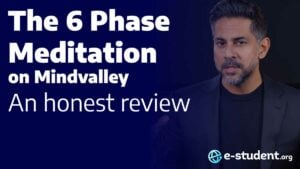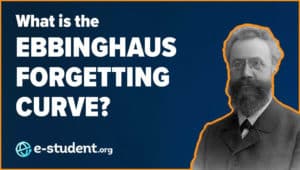- The REAP method encourages active reading and critical thinking by breaking the process of reading a text into four distinct stages.
- The four stages (Read, Encode, Annotate, and Ponder) can be applied to any type of reading material to ensure you are engaging with the material in a meaningful way
- The method has been well studied, with strong scientific results supporting its efficacy.
Do you often feel that you study texts just to forget what they said almost as soon as you finished reading them? The REAP (Read, Encode, Annotate, Ponder) method is a powerful technique for taking effective and organized notes while reading. By encouraging active reading and breaking down the reading and reflection process into four distinct stages, it provides you with a straightforward way to ensure you are engaging with the material in a meaningful way.
In this article, we’ll be looking at what the REAP method is and how we can apply it in our studies, as well as what the scientific literature has to say about its effectiveness.
Table of Contents
What is the REAP method?
The REAP method was developed by Marilyn Eanet and Anthony Manzo at the University of Missouri at Kansas City in 1976 as a response to what they saw as inadequate teaching methods for developing active reading. The method is designed to help students be able to understand the meaning of texts through reflecting and communicating on their content.
REAP consists of four stages:
- Reading: Reading the text provided to identify the ideas expressed by the author.
- Encoding: “Encoding” the main ideas identified in the text in your own words.
- Annotating: Writing “annotations” of the ideas, quotes, etc., in the text.
- Pondering: Reflecting on the content and writing comments or criticisms of the text, and discussing with others.
This will make you return to a text multiple times, each time from a different vantage point, and let you gradually analyze the text at a higher and higher level.
Note that there is some confusion about what the acronym REAP signifies. This is largely due to a competing approach for note-taking, also called REAP, which instead stands for Relating, Extending, Actualizing, and Profiting. Introduced by Thomas Devine in 1987, this variant is a method targeting grade and high school students with a focus on making reading notes easier to memorize by relating concepts to personalized triggers that will jog the student’s memory. This is a less common variant, but good to be aware of.
What is the REAP method suitable for?
The REAP method is primarily meant for reading texts, both fiction and non-fiction, to help you better understand texts. In this way, it is useful for most subjects that deal with texts, whether literature, social studies, or others.
While as a teaching method, it is primarily applied in grade and high school, you will often find variants of the REAP being used under different names in college-level classes. It is also a very useful method to have worked with as a student for your university studies, even when the method is not explicitly applied, as it gives you a way to approach a deeper understanding of texts that is often needed in the humanities, as well as social sciences.
However, it is possible to also apply the method to lectures and presentations. This is particularly useful for argumentative or opinion presentations or ones that are more of a story-telling character. In this case, treat listening to the presentation as the reading stage.
Is the REAP method effective?
The effective REAP method has been well-studied, with several studies showing its effectiveness. This has included showing effects on students’ ability to interact with the text, answer questions on a text, recall and summarize information, and ability to work in groups.
In recent years, there has been a surprisingly large number of studies in Indonesia on the effectiveness of REAP for a variety of student groups. These have shown clear positive results, for example, for learning English as a second language in university, as well as for fifth-grade and eighth-grade, and 11th-grade students.
A recent study also compared the impact on critical reading skills of REAP alongside Cornell Notes and found a dramatic improvement from using either of the methods – but not any major difference between the REAP and Cornell Notes. This is a reminder that the most important thing to better understand texts is to engage with them critically – the exact method is less important, so focus on finding a method that works for you.
Advantages and disadvantages of the REAP method
While the REAP method clearly is a useful method, and share the overall benefits of taking notes, it comes with both particular advantages and disadvantages.
These are the primary advantages of the REAP method:
- A scientifically proven effective method for improving reading comprehension and recall
- Helps build capacity to engage critically with texts
- Provides a framework for re-engaging with a text from multiple vantage points
On the other hand, these are the main disadvantages of the REAP method:
- Method that takes a lot of time, focus, and mental energy
- Not suitable for note-taking during lectures
- Less suitable for all texts (such as some college textbooks) or learning purposes (such as more detailed memorization)
How to use the REAP method
So with that, let’s have a look at how to apply the REAP method in practice.
Preparations
A common way to use the REAP method is to prepare a four-fielder on a page, using each quadrant for a stage of the REAP method. However, if you are planning to write more extensive notes, you may want to use a separate sheet for each stage.
Read
Start with reading the text. At this stage, you only need to write down the overall topic of the text.
In our example, we’re reading an article called “The American Revolution: An Analysis.” In the Read stage, we’ll add the title of the article and the topic.
| ENCODE: |
ANNOTATE: | PONDER: |
Encode
Once you have read the text, you’ll want to write down the main ideas in the text. Don’t worry if you don’t remember from your first reading – just return to the text as needed.
Returning to our example, let’s add the encoding stage and write down the main ideas from the text.
READ: The American Revolution: An Analysis The text is about the causes and effects of the American Revolution |
Effects: independence from British rule, formation of the United States, changes in political power and societal structure |
ANNOTATE: | PONDER: |
Annotate
Once you have read the text, you’ll want to write down the main ideas in the text. Don’t worry if you don’t remember from your first reading – just return to the text as needed.
Returning to our example, let’s add the encoding stage and write down the main ideas from the text.
READ: The American Revolution: An Analysis The text is about the causes and effects of the American Revolution | ENCODE: Causes: taxation without representation, resentment of British control, Enlightenment ideas Effects: independence from British rule, formation of the United States, changes in political power and societal structure |
ANNOTATE:
| PONDER: |
The annotation stage is critical for approaching the text from various different angles, and if possible, try to write several annotations. Below you will find a list of different types of annotations (adapted from a book by Anthony Manzo, the original author of the REAP method) – try to pick at least three of these.
- Summary Annotation: simple statement of the main ideas
- Telegram Annotation: telegram-like message of the author’s basic theme
- Poking Annotation: restatement of a lively part of the text that makes the reader want to respond
- Question Annotation: turning the main idea into a question
- Personal View Annotation: comparing the views and feelings of the reader to what the author said
- Critical Annotation: supporting, rejecting, or questioning the main idea
- Contrary Annotation: stating a contrary position
- Intention Annotation: explaining the author’s intention and purpose
- Motivation Annotation: speculation on what may have caused the author to write the text
- Discovery Annotation: questioning practical issues in the text that require further explanation
- Creative Annotation: writing better views, solutions or endings
Ponder
Having worked through the text a few times, you are now ready to discuss and form arguments around the text. In the ponder stage, we’ll think about different questions that arise from our reading of the text to engage with the underlying ideas critically.
For the final step in our example, let’s consider some discussion questions. When using the method yourself, you should also write a paragraph about the question or discuss the questions in a small group – or ideally both!
READ: The American Revolution: An Analysis The text is about the causes and effects of the American Revolution | ENCODE: Causes: taxation without representation, resentment of British control, Enlightenment ideas Effects: independence from British rule, formation of the United States, changes in political power and societal structure |
ANNOTATE:
| PONDER:
|
Following this process should give you a solid understanding of almost any kind of text you may be faced with. As a bonus, you also have a nicely structured set of notes that can come in handy if you need to revise ahead of an exam or a presentation.



